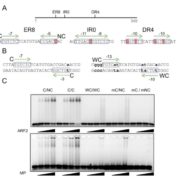
Capturing auxin response factors syntax using DNA binding models (bioRxiv)
Plant Science Research WeeklyAuxin Response Factors (ARFs) are transcription factors that bind to ARF binding sites (ARFbs) to mediate auxin responses. Stigliani et al. analzyed experimentally determined DNA interactions of two ARFs, the repressor ARF2 and the activator MP. They found that the binding site data are best interpreted…
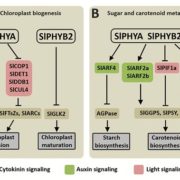
Tomato fruit localized phytochromes regulate chloroplast biogenesis, starch synthesis and carotenoid metabolism (J. Exp. Bot)
Plant Science Research WeeklyThe earliest report about the influence of light quality in tomato fruit biology dates back to 1954, in which it was shown that red /far red light regulates fruit pigmentation reversibly. Using fruit-specific RNAi silencing of SlPHYA, SlPHYB2 or SlPHYB1/B2, Bianchetti and co-workers have shown the…
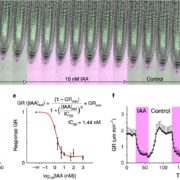
Rapid and reversible root growth inhibition by TIR1 auxin signalling (Nature Plants)
Plant Science Research WeeklyAuxin mediates many of its effects through transcriptional changes via the well-known interaction between its co-receptors and transcriptional regulators (TIR1/AFB – Aux/IAA), but some auxin responses happen too quickly to be explained by transcriptional changes. Fendrych et al. demonstrate that root…
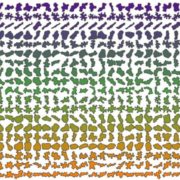
Of puzzles and pavements: a quantitative exploration of leaf epidermal cell shape (bioRxiv)
Plant Science Research WeeklyArabidopsis plants have epidermal pavement cells (the cells that make up the bulk of the epidermis, other than guard cells or trichomes) that are often described as “jigsaw puzzle” shaped, and, because Arabidopsis is such a useful model organism, we have nice models for how these distinctive shapes…
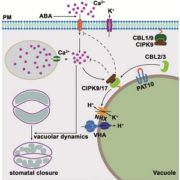
Calcium-mediated ABA signaling negatively regulated by CBL-CIPK system in guard cells (Plant Physiol.)
Plant Science Research WeeklyAbscisic acid (ABA) plays a critical role in the opening and closing of the stomatal pore. This stomatal movement is essential for homeostasis, photosynthesis and stress responses. An influx of calcium ions and an increase the cytoplasmic calcium concentration of the guard cells are an early event in…
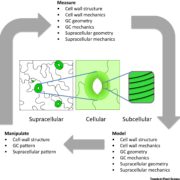
Review: Models and mechanisms of stomatal mechanics ($) (TIPS)
Plant Science Research WeeklyGuard cells are undoubtedly fascinating and frequently reviewed in terms of both their developmental programming and the intracellular signals that contribute to their function. This review, by Woolfenden, Baillie et al., covers a less familiar topic, that of the biophysical constraints to the mechanics…
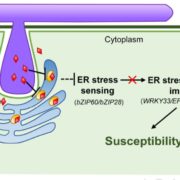
The Phytophthora RXLR effector AVR3a12 suppresses ER-mediated plant immunity (Mol. Plant)
Plant Science Research WeeklyThe pathogenic oomycete Phytophthora capsici secretes RXLR effector proteins into plant cells to subvert host cell machinery and facilitate disease. Several RXLR effector proteins have been characterized to date, however, Phytophthora species encode a vast array of effector molecules that likely target…
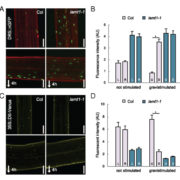
Auxin methylation is required for differential growth in Arabidopsis
Plant Science Research WeeklyPlants need to navigate and adjust their growth according to the environmental clues, such as light or gravity. Asymmetric distribution of auxin is necessary for organ bending. Abbas and colleagues show that conversion of indole-3-acetic acid (IAA) into methyl-IAA (Me-IAA) is important for asymmetric…
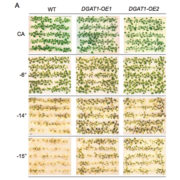
Diacylglycerol acyltransferase 1 contributes to freezing tolerance
Plant Science Research WeeklyLow temperature is one of the environmental factors limiting the plant distribution. Yet there are some plants that can survive freezing temperatures, such as Boechera stricta, native to the Rocky Mountains, spread across a broad range of elevations. Arisz and colleagues observed that freezing tolerance…

